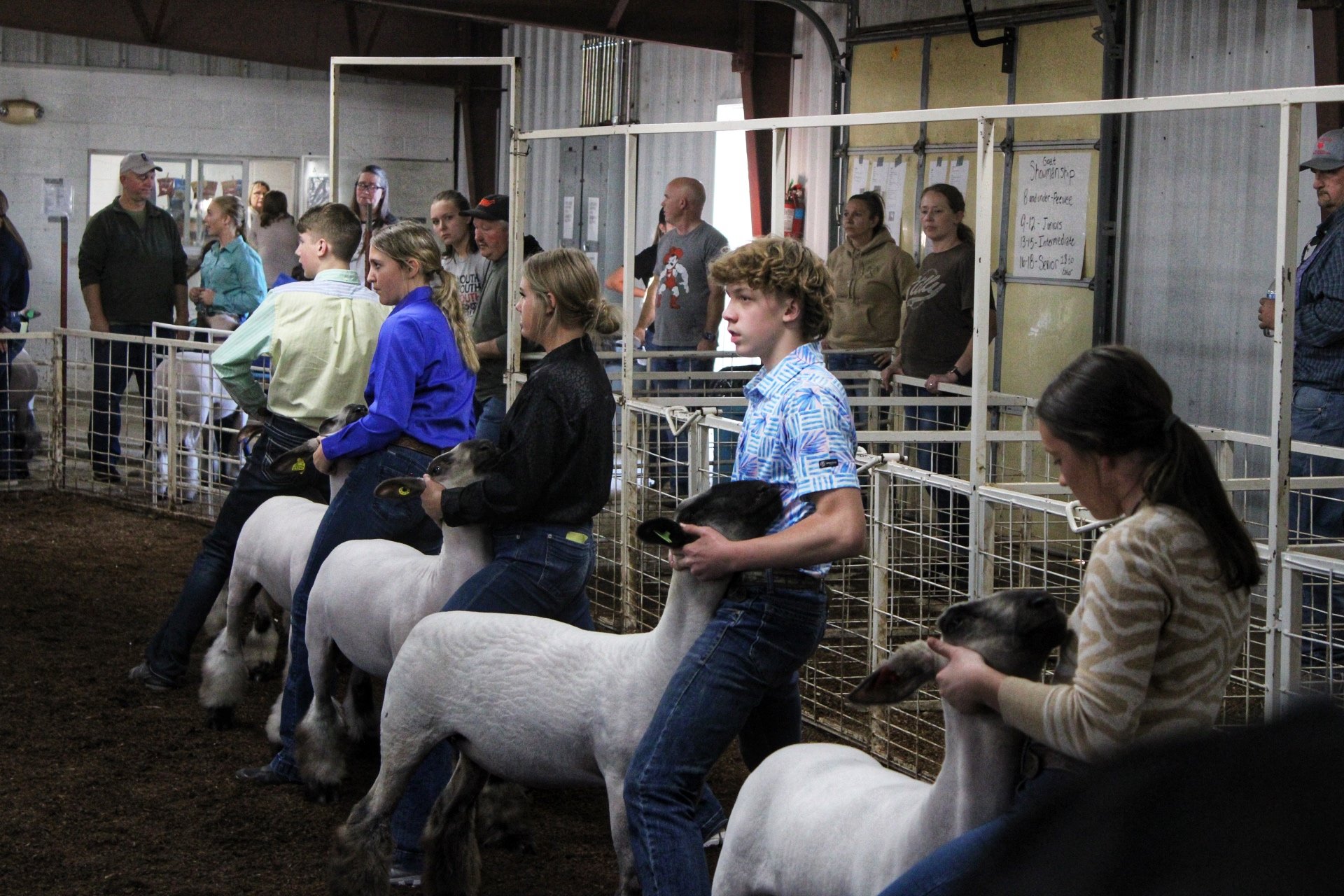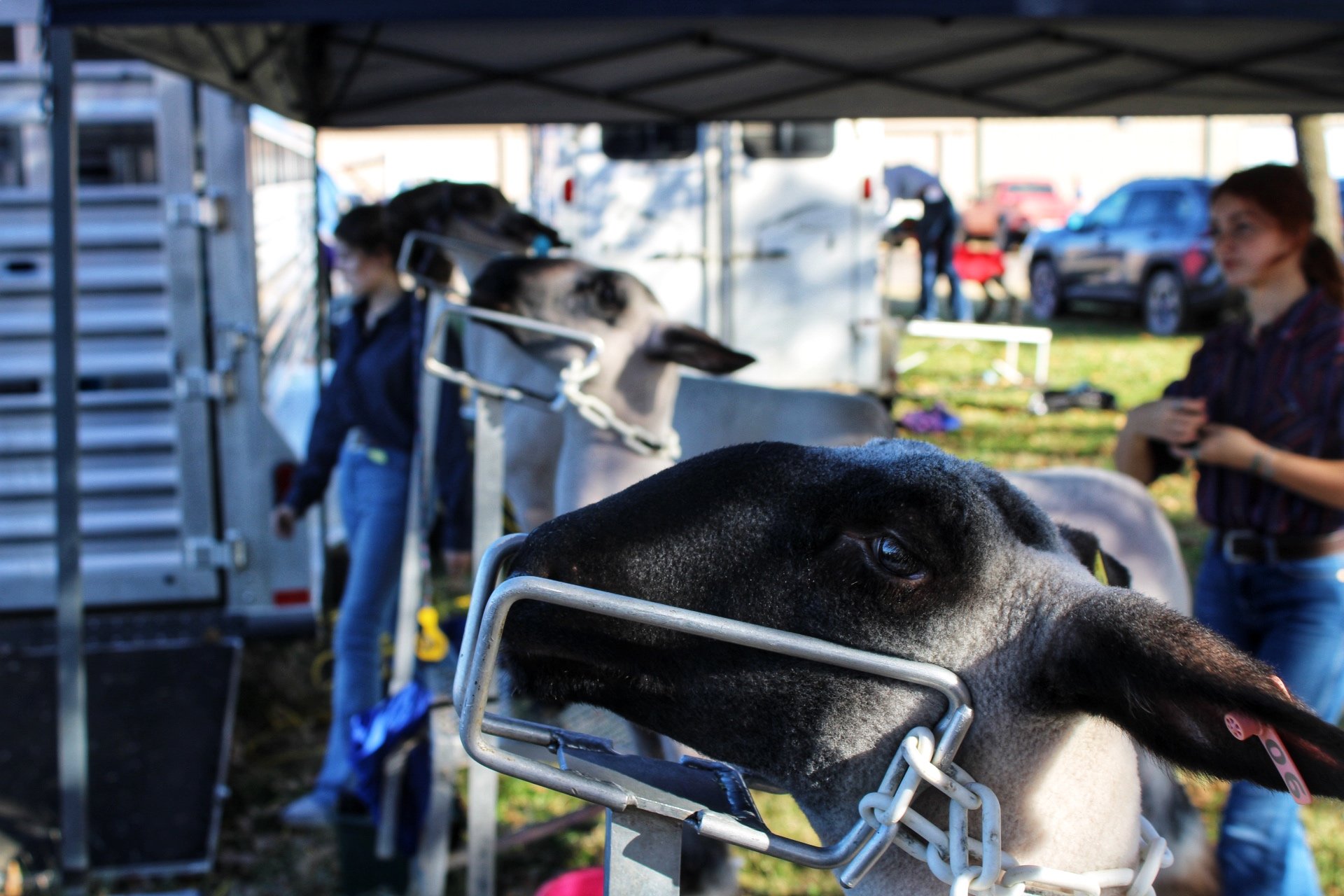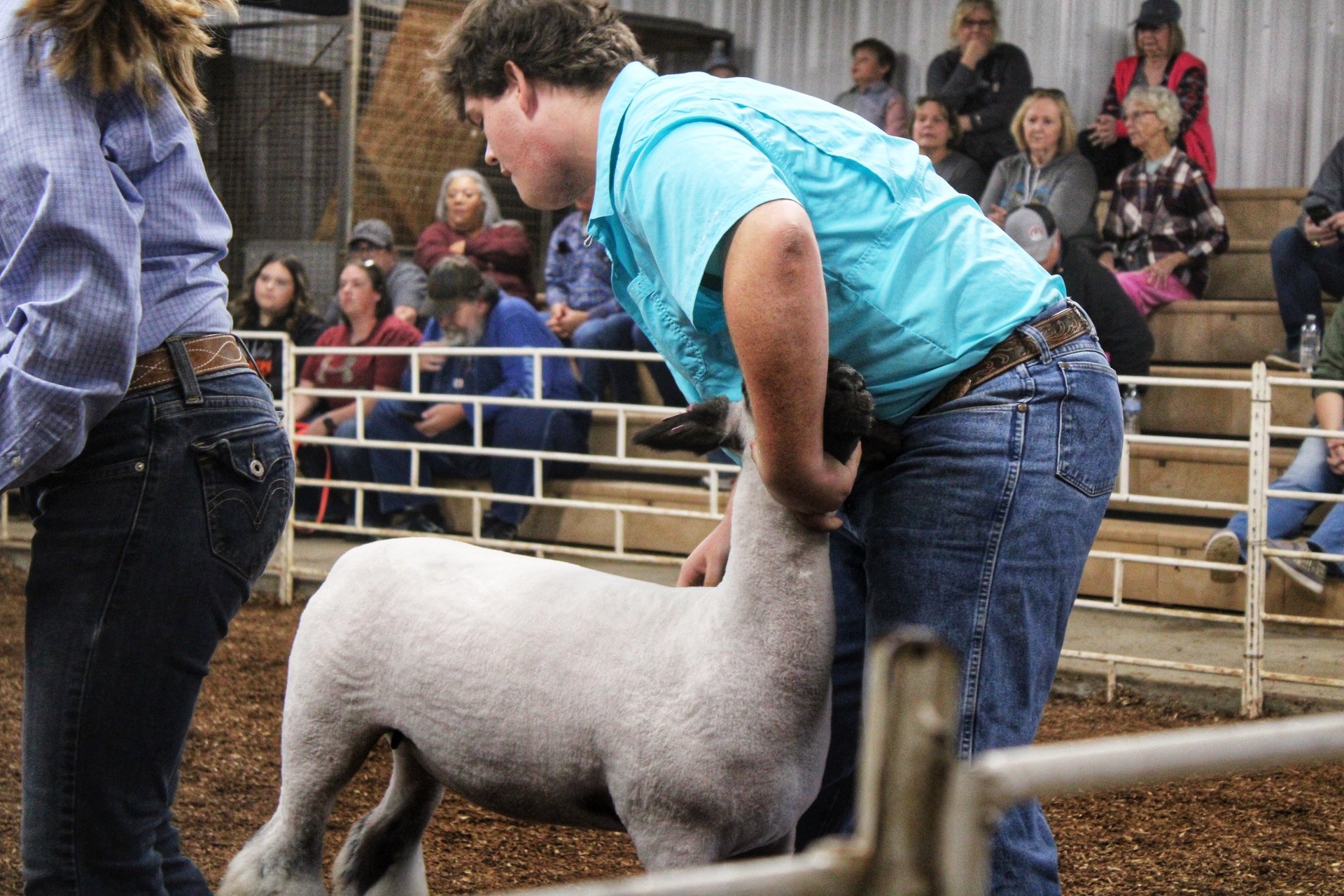The Sport of Livestock
By Sage Grider
Communication is the key in any team dynamic, any given ball game will have the occasional “BALL,” “MINE,” or “I’M OPEN.” But have you ever thought about playing a sport where there's a constant language barrier? Well, welcome to the world of livestock showing. From a 1,000 pound cow to a 100 pound miniature lamb, the members of the Jenks livestock show team become knowledgeable in caring for various species of animals during their show season.
While some kids spend their Friday nights under the lights of the stadium or dribbling a ball on the hardwood, agricultural students who choose to show livestock are out at the barn taking time to care for and train their animals for their livestock shows.
Twice a day, before school and in the evening, members go to the barn to feed, water, and walk their animals. Students learn how the caring, feeding, and exercising of these animals requires research, time spent “in the gym” (or barn in this case) or exercising their animals, and ultimately training these animals to be comfortable to learn commands to perform well in the show ring. By doing this, students learn the science behind producing a quality market or show animal in terms of their muscle composition, low fat, and overall good skin and / or hair quality of the animals.
“When my son first started showing, I never realized how much he would be at the barn instead of being at home. I quickly realized I had to come to the barn if I wanted to see my kid,” said a parent, speaking on behalf of all show team parents.
Show team member, Brooklyn Bowman, in the show ring.
Another show team member, Brooklyn Ballard, talked about her experience raising sheep.
“I spend at least 20 hours a week at the barn caring for my sheep, Wayne.” said Ballard, who expressed her gratitude towards veteran show team members who have helped her learn the ropes during her first season showing.
It can be overwhelming for new show members because of the vast information and skills they have to learn in a short amount of time. Not only do these kids have to learn the proper nutrition to feed their animals, they also have to learn how to exercise, groom, and train their animals to do well in the show ring. This can be difficult and challenging in many different ways.
Senior, Satchel Grider, adjusting his sheep’s legs.
“Showing livestock has taught me how to work hard and manage my time better, it's also taught me a lot of responsibility, I’ve had to care for and feed a living animal,” said Satchel Grider.
To understand livestock showing as a whole, you have to understand the work behind “getting an animal show ready.” The students who show sheep have a pretty involved process they have to go through to get their animals ready. First, they have to shampoo and condition their sheep's coat to make sure the sheep's coat is clean and presentable. Just like a human after they get their haircut, sheep also get blowouts, to make sure they are nice and dry. Next, if their sheep's coat has gotten too long, they use different types of shears and trim back their coat. Lastly, after the lamb is clean and dry, the student goes in with different types of “hair sprays” and a fluffing brush on the bottoms of the sheep's legs to make their leg shag look like your dads hair in the 80’s.
Some people might think that prancing around a show ring with an animal can't be that hard, but looking from the outside they have little to no concept of the amount of dedication, research, practice, determination, and preparation that go into showing livestock.
Ask the agricultural teachers or an ag student you may know when the next livestock show is and come give the team your support!



